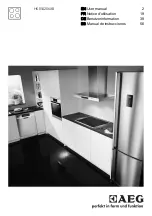
- The height of a chimney affects how it draws:
greater height
better chimney effect
The chimney must project at least one metre over the highest part of the roof.
Other factors also affect chimney draw:
- Houses that have very good internal insulation, free from draughts, provide
inadequate draw as no air enters the building. This can be corrected by
allowing external air to reach the cooker.
- High trees and/or buildings near the house also have a negative effect on
chimney draw.
- Wind speed. Usually, sustained strong winds increase chimney draw but
stormy winds have a negative effect.
- External temperature. The colder it is outside, the greater the chimney
effect.
- Atmospheric pressure. The chimney effect is usually poor on rainy, damp or
stormy days.
- Intensity of the fire. The hotter the fire, the stronger the chimney effect.
- Cracks in the chimney, badly sealed or dirty covers, air entering through
pipe joints, other devices connected to the chimney.... may affect chimney
draw negatively.
2.- Creosote formation and cleaning.
When wood burns slowly, it produces tar and other organic fumes that, when
combined with a damp atmosphere, form creosote.
Creosote fumes may condense if the chimney walls are cold. If it catches fire,
extremely tall fires may be caused.
Any accumulation of creosote must be eliminated.
As the accumulation of creosote depends on a number of variables, it is very
difficult to know when the chimney should be cleaned.
The safest way of ensuring that the chimney of your fireplace is creosote free is
by performing a visual inspection.
Consequently, we recommend building installations that are easy to access.
3.- Options.
If you are going to build a chimney for your cooker, you have two alternatives:
a) Brickwork chimneys.
b) Metal chimneys.
Studies have displayed that there is no great difference in performance
between metal and brick-cement chimneys. You will have to choose one or the
other.
















































